| Reviews & Columns |
|
Reviews DVD TV on DVD Blu-ray 4K UHD International DVDs In Theaters Reviews by Studio Video Games Features Collector Series DVDs Easter Egg Database Interviews DVD Talk Radio Feature Articles Columns Anime Talk DVD Savant Horror DVDs The M.O.D. Squad Art House HD Talk Silent DVD
|
DVD Talk Forum |
|
|
| Resources |
|
DVD Price Search Customer Service #'s RCE Info Links |
|
Columns
|
|
|
Guide to Recognizing Your Saints (Steelbook), A
THE MOVIE:
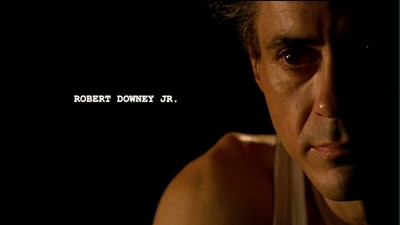
Ambition is a tricky thing. On one hand, the ambition to be something more than a thug in the streets of New York inspired writer Dito Montiel to leave his home and write a memoir about his youth, A Guide to Recognizing Your Saints--thus transferring that ambition to the character Dito Montiel on the printed page. On the other hand, that same ambition has now compelled him to write and direct the film adaptation himself, and it's in this endeavor that Montiel's ambition gets the better of him.
The film opens on the adult Dito (Robert Downey Jr.) giving a reading from his book, setting up the conceit that A Guide to Recognizing Your Saints is a work of memory, one where Dito Montiel exists on two timelines. He is the nostalgic man who can't escape his past no matter how far he runs, and he's the frustrated teen (Shia LaBeouf) of fifteen years prior trying to figure out how to not be the cliché everyone expects him to be. Well, guess what? "Writer going home to confront the people he betrayed in his book" is one of the more worn-out clichés in any writer's bag of tricks, (October Road, anyone?), so mission unaccomplished.
You see, the cause of this current trip down memory lane for grown-up Dito is that his father Monty (Chazz Palminteri) is in poor health, causing the family and friends Dito ditched to reach out for him and ask him to come home. Dito left and never returned, despite always keeping one eye cast back over his shoulder to see if the old life was ever going to catch up. He's a mess, this guy, as is this framing device, the existence of which does a disservice to the movie. Montiel not only asks us to believe that Shia LaBeouf will grow up to become Robert Downey Jr. (talk about a mountain out of a molehill), but it serves only to act as some weird justification to soothe the character's guilt. It doesn't really offer anything new to our understanding of the life experience he's gained.
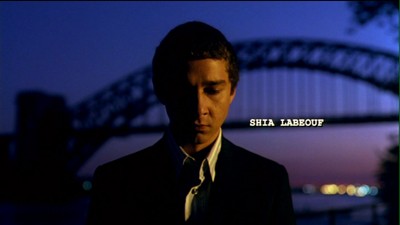
And that's because Montiel did his job well enough in the main story to make us understand why he left like he did. About 80% of the movie is set back in New York, where Dito runs with a rough crowd. His friend Antonio (played by Channing Tatum, who is so into the role, he has to be subtitled at different times to clear up his accent) is ostensibly the leader, mainly because he's the craziest and the biggest bully. The kids, who also include the hopelessly pathetic Nerf (Peter Tambakis), Antonio's deranged brother (Adam Scarimbolo), and a trio of loudmouthed girls, spend their nights wandering the streets looking for something to do and largely finding trouble. Dito runs afoul of a gang of graffiti taggers, a confrontation that incites a recurrence of violence throughout the film. He also befriends a Scottish exchange student (Martin Compston) who feeds Dito tales of places beyond New York. Naturally, Antonio and the Scot don't get along: one is the metaphor for the past, one the possible future. Neither meets a very good fate.
There is a big sense of "been there, done that" in A Guide to Recognizing Your Saints. We have seen similar New York stories before. That said, Montiel does an excellent job of capturing the time and place, recreating his old neighborhood with a vivid, on-the-ground realism. He has an equally vivid grasp of the personalities the plagued him, so much so that he makes it a little hard to like any of them. Which is fine, I don't have to like every character I meet, but there aren't enough dimensions to Antonio and the gang to make them the kind of street toughs you can't turn away from. Antonio is shallow and predictable, he's not the charismatic firecracker like Robert De Niro's character in Mean Streets, a film A Guide to Recognizing Your Saints is often compared to. Martin Scorsese gave us all we needed to know in the title, that it was the streets that made his boys mean, there can't be one without the other. Despite Dito Montiel's exacting sense of setting, there is a disconnect between his streets and the boys who walk them. They just seem to be mean for the sake of it.
Still, A Guide to Recognizing Your Saints has some extremely fine moments. Ironically, the two best ones come out of that unnecessary framing story. One is a scene between Robert Downey Jr. and Dianne Wiest, who plays Dito's mother. Wiest does all the talking, while Downey proves it's true what they say, that the best acting is reacting. Another is a payoff for what had, up until that point, seemed like a pretentious device clumsily employed by a first-time filmmaker. Throughout the movie, Montiel and his editors, Christopher Tellefsen and Jake Pushinsky, chop up scenes so that they backtrack on themselves and repeat, catching different moments from different angles and fussing with the audio. The first time it's really noticeable is when Dito first meets Mike, the Scotsman, and the dialogue is repeated in both a "live" style and a more subdued, disconnected manner. For most of the movie, it comes off as Montiel trying too hard to appear to be taken as a serious cinematic artist, but in its final occurrence, it becomes clear this is meant to be a trick of memory. Throughout the film, there is a frustration that Dito's father never listens to his son, but in this last bit, we finally realize that that son has not been listening either. When their last heated conversation is replayed with all the histrionics removed, we hear the meaning of the old man's words for the first time. How it was said is different than what was said, and how we remember it is different than how we actually heard it.
I don't mean to come off as if I am wanting to beat up on Dito Montiel or A Guide to Recognizing Your Saints just for the sake of it. There are signs that Montiel could become a very accomplished filmmaker given the opportunity to make another film or two. I think the problem here is that he is maybe too close to the material, too eager to render this story as he has seen it all these many years. The director's enthusiastic audio commentary actually backs this theory up. Montiel is too attached to his own history to have any further perspective. First he lived it, then he lived with it, then he wrote the book, now he's making the movie. Perhaps A Guide to Recognizing Your Saints would have been better in the hands of a director that wasn't so in love with the material, and perhaps Montiel will really nail this moviemaking business when he's got a script he's not so inextricably tied to. Only time will tell with the latter; as for the former, we can only guess.
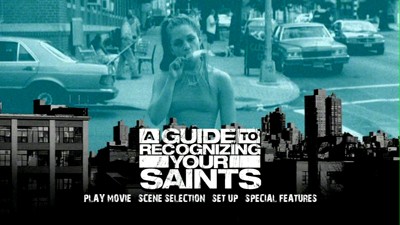
THE DVD
From what I can tell, this new release of A Guide to Recognizing Your Saints is exactly the same as the initial DVD of the film that came out nearly two years ago. You can read DVD Talk's original review here. The only difference appears to be the "steelbook" packaging, which for those unfamiliar, is exactly like it sounds: a metal DVD case that opens like a book.
Video:
A Guide to Recognizing Your Saints was shot at a 1.85:1 aspect ratio, and in terms of maintaining the original slickness of the image, this DVD does a great job. The colors look sharp, the nighttime scenes look dark without being spotty, and there is no dirt or scratching. There is, however, quite a bit of combing and jagged lines, which can be frustrating in a movie with fast-moving violence like this one.
Sound:
The main audio mix for the film is 5.1 Dolby and you'll hear no complaints from me. The soundscape is fantastically rendered, with lots of activity in all of the speakers.
There is also a 2.0 mix as well as English Closed Captioning and Spanish subtitles.
Extras:
All of the extras from the original DVD release of A Guide to Recognizing Your Saints are ported over to this steelbook edition, which is a good thing because they are fairly extensive. These include:
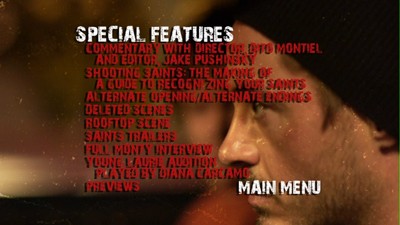
* The aforementioned audio commentary with director Dito Montiel, which also includes co-editor Jake Pushinsky.
* "Shooting Saints: The Making of A Guide to Recognizing Your Saints," a 20-minute behind-the-scenes featurette.
* Alternate Opening/Alternate Endings, all with optional commentary.
* Deleted Scenes, eleven in all and nearly 20 minutes, also with the choice of commentary.
* A six-minute "Rooftop Scene" shot as a test at Sundance Labs and featuring Montiel as an actor.
* "Young Laurie Audition Played by Diane Carcamo," which shows us an actress who didn't get the part. Not sure why that's on here, actually. "You aren't getting the job, but look on the bright side, you'll be on the DVD."
* The "Full Monty Interview", a short clip of Montiel's real father.
* A handful of trailers, though not the one for A Guide to Recognizing Your Saints.
FINAL THOUGHTS:
Dito Montiel isn't the first director to have a debut feature that wasn't all it could be, but few stumble with such promise. A Guide to Recognizing Your Saints is a memoir of the writer's youth in 1980s New York, and while it shows a real flair for time and place, it loses a little in its all-too unsaintly characters and a clumsy need to push the film's themes a bit too hard. The acting is largely very good, the film looks great, and the disc is packed with bonus features, so A Guide to Recognizing Your Saints is still worth a look, just know what you're getting. Rent It.
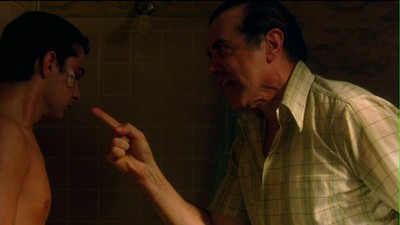
Jamie S. Rich is a novelist and comic book writer. He is best known for his collaborations with Joelle Jones, including the hardboiled crime comic book You Have Killed Me, the challenging romance 12 Reasons Why I Love Her, and the 2007 prose novel Have You Seen the Horizon Lately?, for which Jones did the cover. All three were published by Oni Press. His most recent projects include the futuristic romance A Boy and a Girl with Natalie Nourigat; Archer Coe and the Thousand Natural Shocks, a loopy crime tale drawn by Dan Christensen; and the horror miniseries Madame Frankenstein, a collaboration with Megan Levens. Follow Rich's blog at Confessions123.com.
|
| Popular Reviews |
| Sponsored Links |
|
|
| Sponsored Links |
|
|
| Release List | Reviews | Shop | Newsletter | Forum | DVD Giveaways | Blu-Ray | Advertise |
|
Copyright 2024 DVDTalk.com All Rights Reserved. Legal Info, Privacy Policy, Terms of Use,
Manage Preferences,
Your Privacy Choices | |||||||















